Norwegian Settlers Memorial
This Memorial commemorates the 1834 settlement at Norway, Illinois—the first permanent Norwegian settlement in the Midwest.
Website contains no specific information about interpretative services offered at the site.
This Memorial commemorates the 1834 settlement at Norway, Illinois—the first permanent Norwegian settlement in the Midwest.
Website contains no specific information about interpretative services offered at the site.
The Society has as its purpose the discovery, preservation and dissemination of information concerning the Jewish experience in the Chicago area. The Society seeks out, collects, and preserves written, spoken, and photographic records, in close cooperation with the Chicago Jewish Archives, Spertus Institute of Jewish Studies. The Society publishes historical information, holds public meetings at which various aspects of Chicago Jewish history are treated, mounts appropriate exhibits, and offers tours of Jewish historical sites.
Though the Society does not have a museum, it does offer lectures and tours of Jewish historic sites in Chicago.
Organization, without a historic site base of its own. May still be worth including, though?
The Swedish–American Historical Society is a nonprofit organization founded in 1948, with the mission of recording the achievements of the Swedish pioneers. The society is devoted to the mission of studying the Swedish emigration, its history, and the culture of the Swedes in North America through research, publications, programs, and archives.
Does not appear to offer educational opportunities beyond access to archives.
Scholar and author Nancy S. Seasholes follows the history of landmaking in Boston, looking at the history and means of creation of fill in the city.
Another version of this lecture is available in our database. The other (node identification number 2005) is slightly more recent.
This iCue Mini-Documentary describes the wave of thousands of German immigrants that arrived in America between 1820 and 1860. These immigrants contributed to many early reform movements, and made cultural contributions as well.
This feature is no longer available.
How did World War I affect politics in the United States? Why did the prestige and power of American business dramatically increase in the 1920s? What explains the remarkable cultural ferment of this period? What place did religious and spiritual values assume in the United States during the 1920s? How did concepts of citizenship and national identity change in the decade after World War I? How did women and African Americans struggle to advance social equality? How did modernizing and traditional forces clash during the decade?
This institute will explore these and other questions through history, literature, and art. Under the direction of leading scholars, participants will examine such issues as immigration, prohibition, radicalism, changing moral standards, and evolution to discover how the forces of modernity and traditionalism made the 1920s both liberating and repressive. Participants will assist National Humanities Center staff in identifying texts and defining lines of inquiry for a new addition to the Center's Toolbox Library, which provides online resources for teacher professional development and classroom instruction.
Participants in this workshop will travel throughout the Delta as they visit sites where significant events occurred. They will discuss and learn about issues involving civil rights and political leadership, immigrants' experiences in the Delta, the Blues, the great migration, agriculture, and the Mississippi River, among other things. They will sample Delta foods, visit local museums, and listen to the Blues. Field trips will roam as far as Greenville, Greenwood, and Memphis, with stops in between.
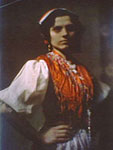
Primary sources and questions for a unit on immigration to the United States during the late 19th and early 20th centuries.
Primary source documents and statistical tables about immigration in the late 19th and early 20th centuries anchor this lesson. Analytical questions about the documents and the tables require students to draw conclusions from the data, as well as evaluate opinions regarding immigration as expressed in the primary sources.
These materials are supplemented by Digital History’s larger Immigration Learning Module which provides many hyperlinks to additional primary sources including a timeline and documents. (NOTE: To access these documents, paste the title of the document into the search field when you arrive at the Library of Congress Learning Page.)
Links to primary source sets from the Library of Congress and other features of the Ethnic America section of the Digital History site are also provided.
Overall we feel that the basic lesson plan provides an excellent set of teaching materials, but we encourage you to explore the interrelated hyperlinks of the Learning Module to find additional materials that will inspire you and your students.
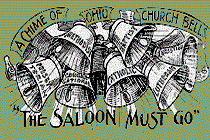
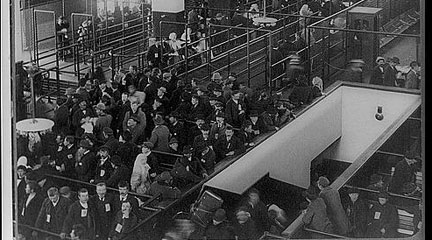
Yes
Yes
Much information is available on the website. In addition, Digital History’s online textbook provides detailed background information on the topic.
Yes
Yes
In the basic lesson students are asked to draw conclusions from immigration data. Other documents that you may decide to use from Digital History’s online textbook may elicit student analysis and interpretation as well.
Yes
Yes
While no specific audience is stated, we feel the basic lesson and accompanying questions are suitable for middle school. Other materials on the site may be useful for all grade levels.
No
Teachers will want to provide some scaffolds of their own to help students understand and interpret texts and data tables.
No
No assessment criteria are included. As teachers define their goals for this lesson they will have to determine how to assess student learning.
Yes
The basic lesson is unstructured, but the questions and activities are clearly presented. It would be easy to use these materials to teach about immigration in normal classroom settings.
No
Teachers must provide structure and goals for this lesson.
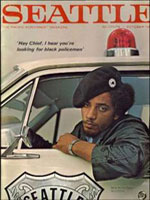
The long history of struggle for equal rights by various ethnic groups in Seattle, including Filipino, Chinese, Japanese, African, and Native Americans; Jews; and Latinos is documented on this website. Primary and secondary sources integrate labor rights movements with struggles for political rights, as is evident in the "special sections," that highlight the Chicano/a movement, the Black Panther Party, Filipino Cannery Unionism, the United Construction Workers Association, Communism, and the United Farm Workers. Each section brings together oral histories, documents, newspapers, and photographs that are accompanied by written and video commentary to provide historical context. The collection of more than 70 oral histories of activists is especially useful for understanding the lived experience of racism and its especially subtle workings in the Pacific Northwest. Together, these resources provide important national context for the civil rights struggle, too often understood as a solely southern phenomenon.
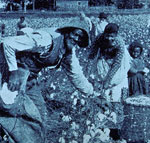
A memorial to Roland Marchand, the late historian of popular culture and advertising, this website presents a slide library with more than 6,100 images, including more than 2,000 advertisements, drawn from Marchand's collection. The images are organized into more than 40 major categories and close to 200 subcategories.
The site also offers 48 lesson plans designed by Marchand, each with an introduction, an essay assignment, and 10 to 40 primary source documents. The lessons cover a diverse range of controversial topics, including the Antinomian Controversy, the reactions against Chinese immigrants, the Pullman Strike, the Women's Suffrage Movement, and Watergate. The site will be useful for researching popular culture and advertising, as well as numerous other topics in American history, such as women, wars, immigration, labor, and African Americans.